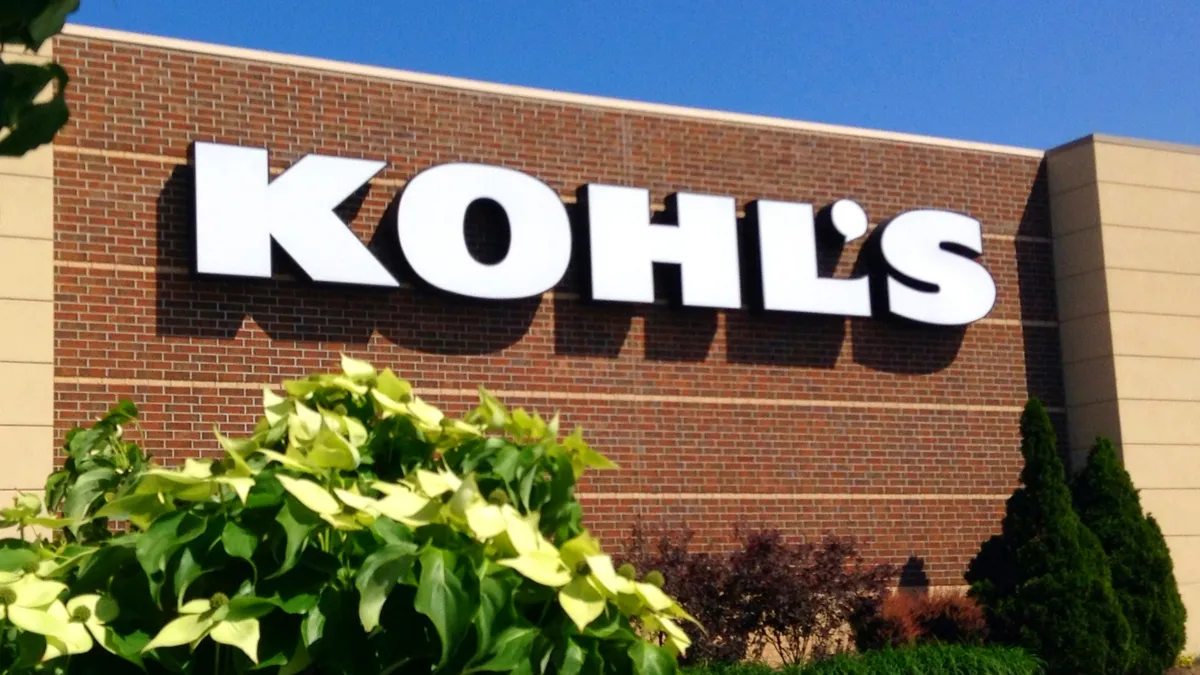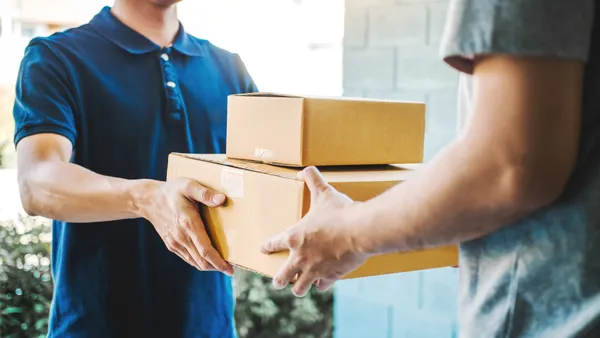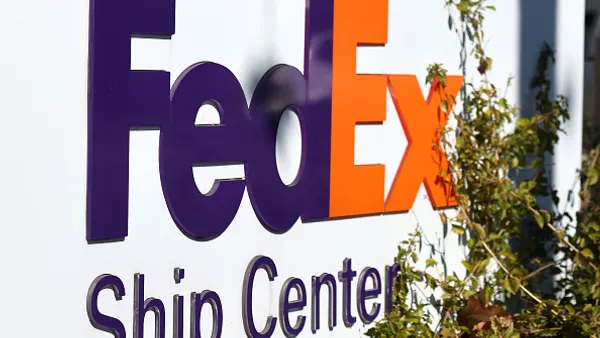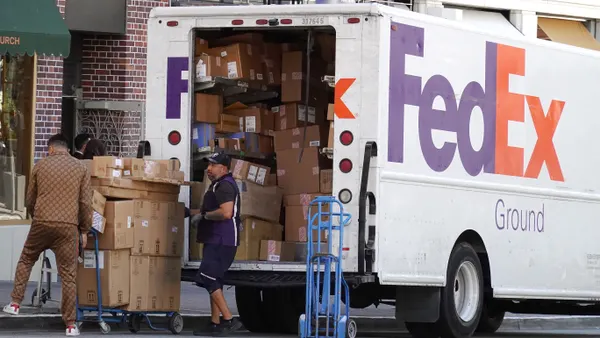After Hurricane Dorian hit the Bahamas in early September, FedEx, Direct Relief, the American Logistics Aid Network (ALAN) and other organizations and emergency response teams have been working to deliver aid to the islands after the devastating storm.
What many of them are finding, however, is getting supplies to the Bahamas is only the beginning. The last mile, getting cargo from coastal ports and airports into the communities that need them, is where supply chains and overall visibility can break down.
Because Dorian was a relatively slow-moving storm, Kathy Fulton, executive director at ALAN told Supply Chain Dive in an interview, ALAN had time to begin gathering certain resources and do some planning in advance with its nonprofit partners on the ground. Once the storm hit the Bahamas, it stayed put, doing a "truly catastrophic amount of damage," she said, at which point "the real needs assessment and response coordination can only kick in after the fact ... then you have to determine what survived."
For comparison, Hurricane Maria, as devastating as it was, stayed over Puerto Rico for about eight to 10 hours, Andrew Schroeder, vice president of research and analysis at Direct Relief, told Supply Chain Dive. Hurricane Dorian stayed over the Bahamas for 24 to 30 hours, he said.
In these situations, ALAN, Direct Relief and similar organizations work between first responders on the ground and outside actors to coordinate the logistics of getting aid to the disaster areas.
When relief becomes 'the second disaster'
Individual organizations typically see success in getting relief items where they need to go, though Fulton said when it comes to coordinating inventory streams across multiple partners, too much help can actually be a problem. Responders sometimes become overloaded with items such as toys, clothing or perishables, and if the items sit out, they "quickly become junk," Fulton said. She called it "the second disaster."
During ALAN's response to Hurricane Maria, Fulton said the organization had to coordinate more than 500 million pounds of supplies coming to the island from across the U.S. without a great deal of visibility into what was being sent where.
"You're much better off making a donation so [nonprofits or first responders] can buy and ship in bulk, the way modern supply chains are optimized to be."

Kathy Fulton
Executive Director, American Logistics Aid Network
This problem can occur due to the sometimes limited ability for responders on the ground to communicate their real-time needs to the multiple charities, or even private plane and boat owners, that are ready to inundate them with supplies, Fulton said.
Furthermore, even if the items received are exactly what responders need, there is the added logistics challenge of ensuring it doesn't end up all in one place, where it could go to waste or get damaged, and is instead sent around to multiple relief centers in the right quantities.
While charity from individual actors is needed and appreciated, Fulton said, "sending in one box at a time piecemeal is just inefficient. You're much better off making a donation so [nonprofits or first responders] can buy and ship in bulk, the way modern supply chains are optimized to be."
Dave Lusk, senior manager of global operations and control for FedEx Express, has been involved in the company's Dorian response efforts. In an interview with Supply Chain Dive, he said the company is most focused on getting Boeing 757s into the Freeport airport, which reopened for limited operations on Sept. 9. Lusk said FedEx gives responders on the ground access to scanners and online portals that allow them to track incoming cargo in real time and know what's inside each container.
For humanitarian logistics operators who don't have this degree of scale or sophistication, Lusk recommends looking to lessons learned after the 2008 hurricane in Haiti. After the storm hit, "inventory overload became an impediment to responding to the last-mile effectively," Lusk said. "You have to throttle your throughput to meet constraints on the ground."
Getting from the port to the last mile
"In an area where you have a lot of connections, a lot of links like an urban area would have, you have more visibility into what your [delivery] options are," Fulton said. "Any time you have an island, or even an island effect [where parts of an area are cut off from the outside world], you are limited in the amount of material you can get in."
In the case of the Bahamas, flooding, damage to roads and debris can cut off key access points into communities, particularly rural ones. Getting relief items into these areas is vital for survivors but also can be slow and dangerous going for last-mile supply operations.
Lusk said in cases like this, resources often have to be helicoptered in if trucks can't make the trip, which does the job in an emergency but isn't as efficient as trucking cargo there in bulk.
In part for this reason, Lusk said, FedEx focuses on getting material to key airports and relief centers as part of its disaster response efforts but doesn't run deliveries into deeper, more disaster-affected areas.
To minimize this challenge, and speed the process of getting relief to inhabitants in the Bahamas, Schroeder told Supply Chain Dive there is an entirely different logistics operation going in parallel to delivering supplies — delivering people to the relief centers.
This effort accomplishes two things, Schroeder said. First, it helps get survivors out of disaster-stricken areas where exposure to flooding, lack of electricity, water or food can cause public health risks to spike. Second, getting them into relief centers in less heavily damaged parts of the country, in this case Nassau and Freeport, not only helps ensure they get the attention they need faster but reduces the imperative for responders to coordinate multiple supply networks into far-flung, hard to reach areas.
A resilient supply chain is a ready supply chain
Despite the number of digital supply chain visibility solutions available today, Fulton said, there are no industry standard tools that the majority of the disaster response actors can sign onto. Where a company can benefit from a vertically integrated supply chain, disaster response involves multiple, independent organizations with separate logistics operations, making achieving visibility a challenge.
Lusk stressed the importance of nurturing strong public-private partnerships ahead of time to build resiliency and inter-supply chain lines of communication in preparation for future disasters.
"The more resilient we can make our global communities on the front end, the more effective our response and recoveries for these communities will be on the back end," he said. "This is a team sport. No individual private sector entity can do it alone." That's why he says FedEx participates in disaster response conferences and simulations with the U.S. Chamber of Commerce, FEMA and other international organizations and encourages logistics operations of all sizes to do the same.
"For this part of the Bahamas, this a defining moment in the country's history," Schroeder said. "They will be rebuilding from this for many years ... so we can take the resources we've been able to gain in and through the generosity of donors for the relief effort and make sure we can make smart decisions about building a new healthcare infrastructure ... a new energy infrastructure," and other critical services in the country.













